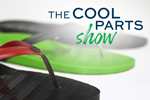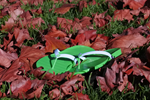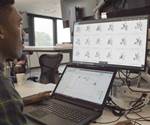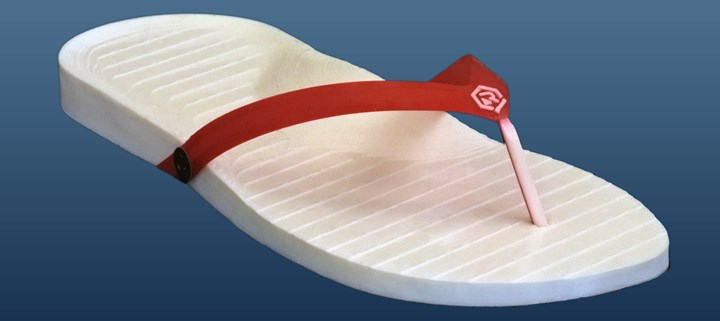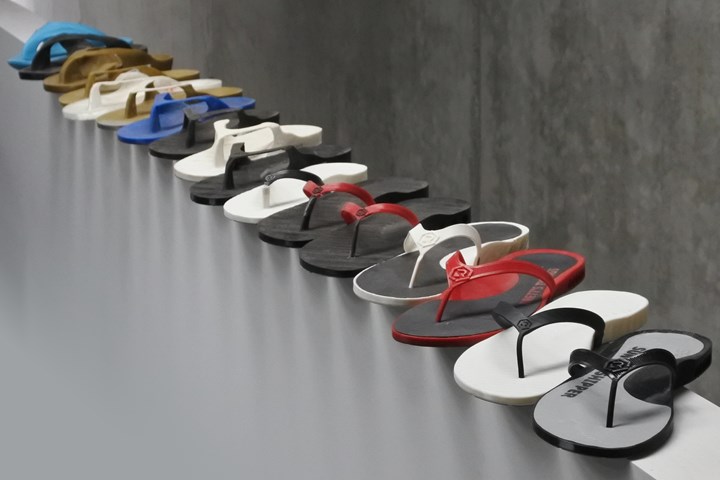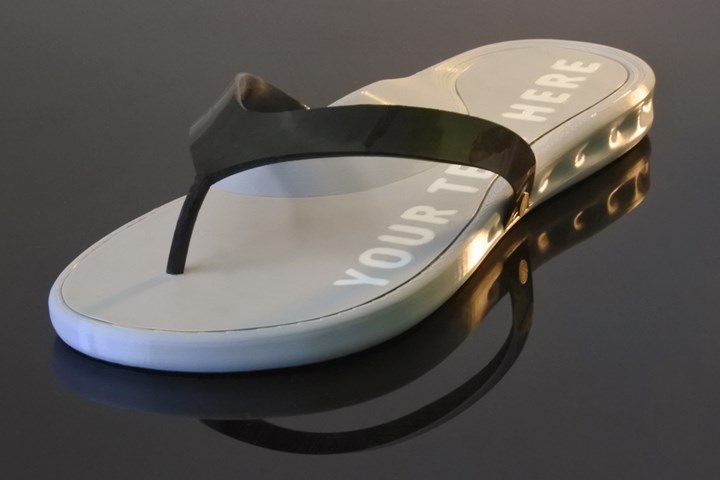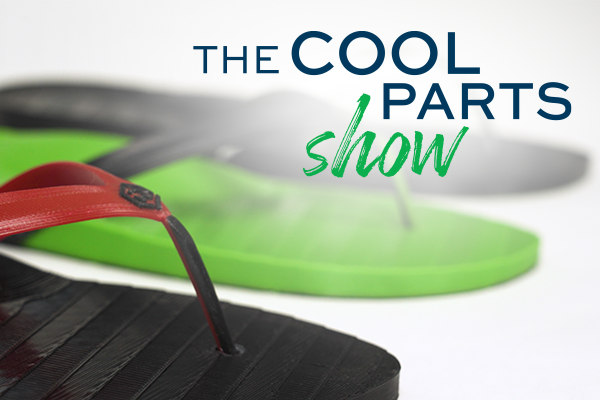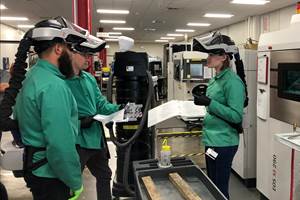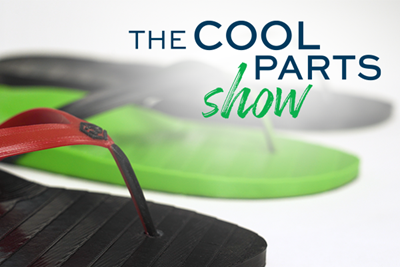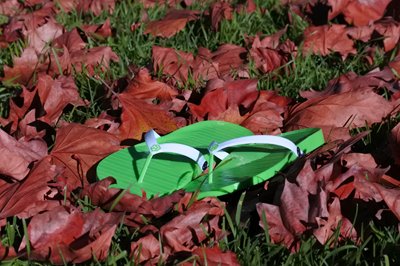In 2020 when Brett Casson launched Retraction Footwear, his business that produces custom flip-flops 3D printed on demand, he had a product design that worked. The company’s original shoe could be 3D printed in just two pieces (strap plus sole, a consolidation that also contributes to the shoes’ sustainability), and the digital design allowed for scaling and adjusting the shoes to fit a customer’s unique feet along with producing them in custom color combinations. These facts alone allowed Retraction to offer many more options and variables to customers than most of us are used to in a shoe purchase.
The original design for Retraction Footwear’s custom shoes. Each flip-flop was printed in just two pieces (strap and sole) which allowed for assembly consolidation, but also revealed the layer lines throughout the contours of the footbed. Photos: Retraction Footwear
But that original flip-flop design wasn’t perfect, and as orders began to grow, Casson started collecting customer feedback — and acting on it. The nimbleness possible through additive manufacturing (AM) has allowed Casson to modify the design of these shoes quickly and affordably, in response to real-time feedback. When the entire manufacturing process is digital, the file becomes the tooling — and the tooling can be easily changed.
The rapid design iteration possible via 3D printing need not stop once the product goes to market. This photo shows just a selection of the different designs Retraction has gone through both before and after its 2020 launch.
In a span of just one year since launch, Retraction Footwear has gone through four major iterations of its product (and many more if you count all the small changes made along the way). The latest version of the shoe looks quite different, with a footbed that is nearly twice as thick as the original (but with an infill pattern that means it doesn’t use twice as much material, Casson notes); a smooth insole that is now printed separately and can be customized with text; and a padded strap that is cushioned with air pockets trapped during the 3D printing process.
The latest iteration of the design. The main part of the footbed is now printed separately which adds some assembly to the process, but the piece can now be printed flat which makes for a smoother surface and allows for incorporating custom text.
“If you were doing this through traditional manufacturing, there’s no way you’d be able to evolve that quickly,” Casson says. “Or at least, not without a huge budget.”
Conventional shoe manufacturers of course change and evolve the designs of their footwear, but this comes with a large investment in tooling and lead time; a new generation of a shoe only appears every so often. But with 3D printing, customer input can lead much more quickly to new iterations of the product. Or even, “Let me fix that for you and send you a new pair,” Casson says.
He expects the design will continue to evolve and change in the future, but Retraction is also working to help customers order the best possible fit from the beginning. Where previously buyers ordered based on their shoe size, Retraction Footwear is now partnering with Xesto, a footwear fitting app for Apple devices that can capture precise measurement of a person’s foot. Though intended to help users select the right size in conventional shoe shopping, the app’s capabilities are a natural complement to 3D printed footwear where the measurements themselves can become the appropriate custom shoe dimensions. While currently customers who choose this option enter their measurements manually while ordering (and shoes can still be purchased in standard sizes), Casson is working toward integrating the app into the website itself, allowing an even more seamless shopping experience for custom-made footwear.
Related Content
AM 101: What Is Hot Isostatic Pressing (HIP)? (Includes Video)
Hot isostatic pressing has long been used for metal castings, but is now being applied as a valuable method for closing porosity in metal 3D printed parts.
Read MoreHow to Pursue a Career in Additive Manufacturing
AM professionals are in demand as 3D printing matures and advances. But what skills are hiring manufacturers looking for? How can applicants prepare? And where can you find relevant job listings?
Read MoreHow to Improve Polymer AM Productivity 20X
A fast cycle time is critical to efficient production 3D printing, but it’s not the only thing. How you choose the right parts for AM, prepare jobs for production, and manage post processing will have just as big an impact on total 3D printing throughput. It all needs to work together to achieve maximum productivity.
Read MoreHow Siemens Energy Applies Additive Manufacturing for Power Generation and More
At an applications center in Orlando, Florida, a small team of AM specialists is spanning industries by 3D printing parts to support both Siemens Energy power generation systems and external customers.
Read MoreRead Next
What Do These Flip Flops Say About Manufacturing's Future?: The Cool Parts Show #21
These 3D printed flip-flops are an example of mass customization, but they also hint at manufacturing's more sustainable, circular future. Find out why in this episode of The Cool Parts Show.
Read MoreRetraction Footwear Is the Sustainable Manufacturing Business of the Future
Retraction Footwear offers a new way of buying flip-flops that are made to suit each customer. But the company also represents a new way of thinking about production, in a circular economy loop that encompasses material, design, manufacturing, product and end-of-life.
Read MoreAM Brings Down the Wall Between Manufacturing and Design
In additive manufacturing, design and manufacturing blend together. They can’t be separate if AM is to realize its promise.
Read More

.jpg;width=70;height=70;mode=crop)
